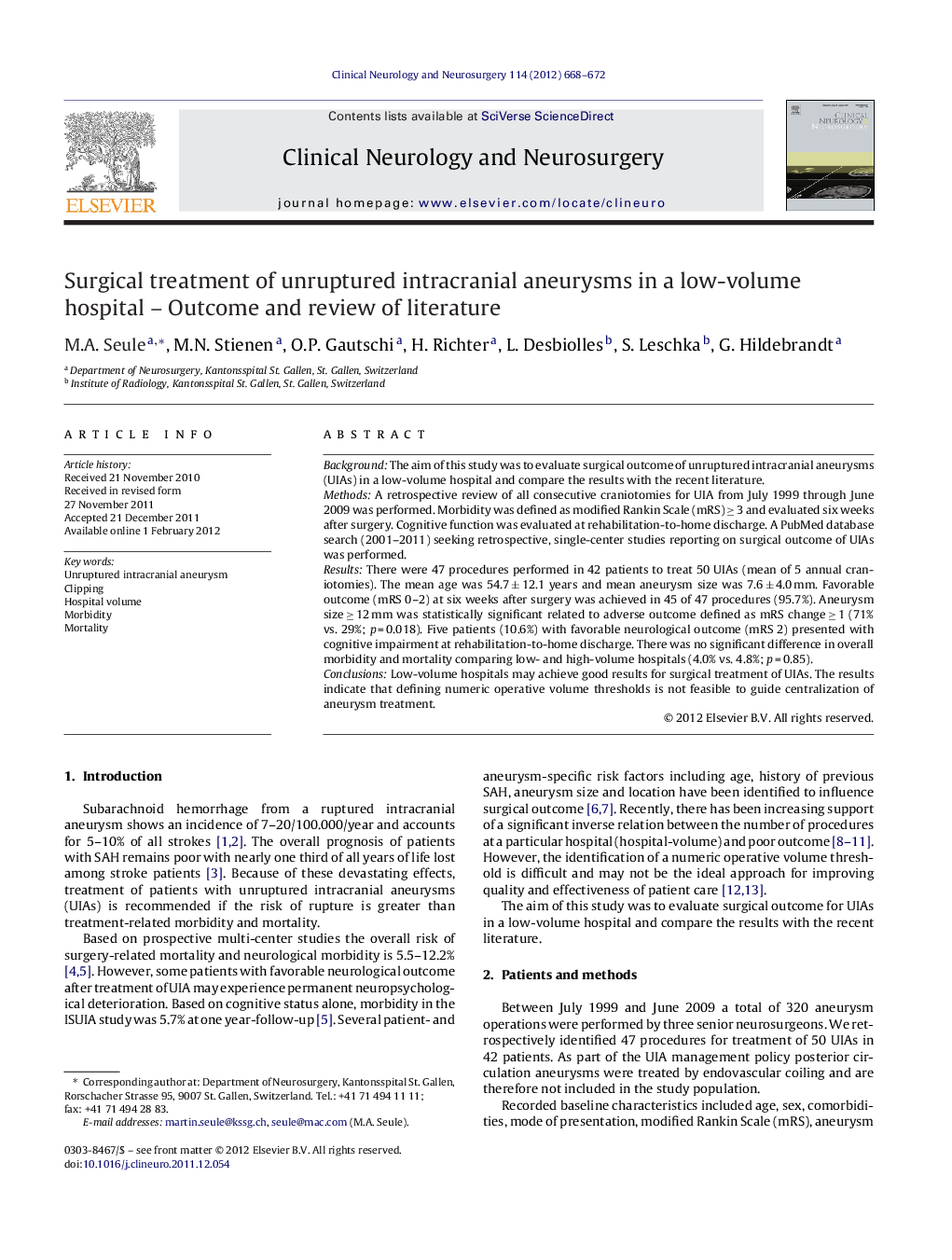| Article ID | Journal | Published Year | Pages | File Type |
|---|---|---|---|---|
| 3040821 | Clinical Neurology and Neurosurgery | 2012 | 5 Pages |
BackgroundThe aim of this study was to evaluate surgical outcome of unruptured intracranial aneurysms (UIAs) in a low-volume hospital and compare the results with the recent literature.MethodsA retrospective review of all consecutive craniotomies for UIA from July 1999 through June 2009 was performed. Morbidity was defined as modified Rankin Scale (mRS) ≥ 3 and evaluated six weeks after surgery. Cognitive function was evaluated at rehabilitation-to-home discharge. A PubMed database search (2001–2011) seeking retrospective, single-center studies reporting on surgical outcome of UIAs was performed.ResultsThere were 47 procedures performed in 42 patients to treat 50 UIAs (mean of 5 annual craniotomies). The mean age was 54.7 ± 12.1 years and mean aneurysm size was 7.6 ± 4.0 mm. Favorable outcome (mRS 0–2) at six weeks after surgery was achieved in 45 of 47 procedures (95.7%). Aneurysm size ≥ 12 mm was statistically significant related to adverse outcome defined as mRS change ≥ 1 (71% vs. 29%; p = 0.018). Five patients (10.6%) with favorable neurological outcome (mRS 2) presented with cognitive impairment at rehabilitation-to-home discharge. There was no significant difference in overall morbidity and mortality comparing low- and high-volume hospitals (4.0% vs. 4.8%; p = 0.85).ConclusionsLow-volume hospitals may achieve good results for surgical treatment of UIAs. The results indicate that defining numeric operative volume thresholds is not feasible to guide centralization of aneurysm treatment.
